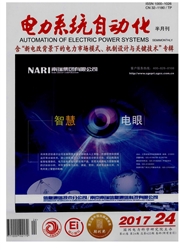

 中文摘要:
中文摘要:
传统的可靠性管理方式由于缺乏用户需求信息和经济激励,导致可靠性建设具有一定的盲目性和滞后性。为了更好地管理供用电可靠性以降低停电损失,文中提出了新型停电保险机制,论述了引入停电保险的可行性,根据经济性和可靠性指标对负荷点进行停电风险等级和风险群的划分,提出了合理厘定保险费率的方法,同时分析了用户投保的方式、理赔方案及其在投保过程中的决策行为,并探讨了保险方关于可靠性管理的行为方式和风险决策模型。数值分析表明,输配电公司可以通过停电保险分析用户可靠性需求信息,更经济地对用户用电面临的不确定性进行层次化管理,提高了全社会的用电效益。
 英文摘要:
英文摘要:
Traditional reliability management is lack of consumers' demands information and economic incentives, which leads to the blindness and laggardness in reliability planning and design. This paper proposes a new outage insurance mechanism so as to manage the power supply reliability and reduce the outage loss more effectively. It discusses the feasibility to introduce the outage insurance, and advances the proper method to calculate the insurance rate by classifying the outage risk degrees and risk groups of loads through economic indices and reliability indices. Meanwhile, it analyzes the insured mode of customers, settlement of claims and insurance decision behavior, and then discusses the behavior and risk decision-making model of insurer's reliability management. The numeric example shows that power transmission and distribution companies can easily analyze the reliability demand of different customers according to the outage insurance and economically carry on multilevel management of the uncertainties faced by consumers, which will improve the benefit of social electricity consumption.
 同期刊论文项目
同期刊论文项目
 同项目期刊论文
同项目期刊论文
 期刊信息
期刊信息
